Adventure, we have said in these pages, is in the wrist of the rider. It's up to you to decide what kind of escapade suits the cut of your jib. To some, and what now defines the ADV category, it's the luxury SUV of motorcycles—tall, rugged (looking), replete with whistles, bells, and sci-fi gyroscopes. To others, adventure is a couple of gallons of gas and just enough parlay with the DMV to mosey between trailheads. Or perhaps a venerable thumper somewhere in the middle, as reliable as taxes.
With adventure touring being so exceptionally popular, companies have been building down from the $20,000 upper crust, in the general direction of simplicity. If what you desire is a broadly capable, full-size machine with the advent of a 21-inch front wheel but without frivolous gadgets like electronic suspension, you’ll want an 800-class ADV. For a handful of years now, that has meant either a Triumph Tiger 800 or a BMW F800GS. Now, for the same price (less, actually!) you’re welcome to Honda’s new ADV special agent CRF1000L. Code name: Africa Twin.
Along with price, it shares approximate power and weight figures, as well as the general scope of options, with the Tiger 800 XC and F800GS Adventure. And because they all share the dirt-biased, not-so-subtle-nod-to-off-road-21-inch front rim, we thought we would fit up Continental TKC 80 knobbies and experiment with each bike’s actual beyond-the-pavement adventure capability. Still, we rode them all on the street. Each of the machines is just fine, delivering suitable and only slightly different on-road performance. But this test is dedicated to those customers who truly want to explore slices of this earth not groomed with tarmac or by heavy equipment.
If there's a company slicing one category thinner than Triumph with its Tiger 800 lineup, we've never heard of it. Hinckley now has eight (yes, eight) different versions of the Tiger 800, split into two columns of XR and XC—the XR bikes with cast wheels and Showa suspension and the XC models with spoke wheels and WP suspenders. The pricing spectrum begins at the base-level XR at $11,500 with ABS and TC but no frills and goes all the way up to the XCa, which boasts everything from heated seats and grips, to cruise control, to a GPS mounting kit and a $15,500 MSRP.
For the purposes of our test, Triumph bestowed upon us the latter, a fully farkled XCa, to take on BMW and Honda. In our first stint, covering about 50 miles of pavement escaping greater LA, the Trumpet was off to a good start. The 800cc triple (which has been around since the Tiger debuted in 2010) is as sweet as ever, with excellent ride-by-wire fueling, a terrific growl from the pipe, and a satisfying top-end rush. Even though its wind protection was the worst in this test, the Tiger is smooth and agreeable on the freeway and doesn’t wheeze for a seventh gear like the BMW does. Handling is nice and light too. From a parking lot to twisty roads, El Tigre is a fine tarmac teammate.
As we wound our way into the foothills via smooth dirt roads, the Tiger continued to hold its head high, bopping along confidently on loose gravel and soaking up potholes without breaking a sweat. If you’re in the mood to get frisky, turn off the mediocre off-road traction control and let the triple drift elegantly all day long, knowing the trustworthy off-road ABS has your back.
It’s a fun bike, sure, but it was when the going got tough that the Tiger 800 finally felt out of its element. The WP fork and shock seemed refined and well calibrated on pavement but were immediately overwhelmed, surrendering completely to the third or fourth water bar. Odd, we thought, because the Triumph’s springs felt the stiffest on the street yet bottomed out the easiest when we went off the beaten path. When we researched it at a stop we noticed the Tiger’s suspension sits very deep in its stroke even when static, which means there’s less available stroke when a bump comes along. Even the engine, which made us smile on asphalt, just seemed peaky and uneasy in the dirt. It’s a good sport-touring powerplant, but it’s not the best for enduro-style riding.
As for amenities, this XCa model we tested is soaked in doodads meant to make life easier. Three ride modes (Road, Off-Road, and Rider) adjust throttle response, ABS, and TC behavior, with Rider being a custom mode that can be tailored via the dash. However, Triumph’s software team is officially writing checks that the small LCD screen can’t cash—cycling through ride modes via the dash-mounted button is easy enough, but entering the setup menu and tweaking the custom settings in the Rider mode is a headache when compared to other systems. We used Rider when tackling dirt because the off-road TC was a hindrance, though the bike will reset to Road mode whenever the key is cycled. Safety first!
Because this test focused on the off-road prowess of these machines, you surely see now why the Triumph is trailing the pack. It’s just not as well suited to knobby-tire terrain. And at $15,500 it’s the most expensive of the group. If it were up to us, we would probably opt for the slightly lower-spec XCX—foregoing the heated seats and grips, fog lamps, and GPS kit, among other things—which keeps the essential ADV bits but saves $1,800, ringing in at $13,700. That price doesn’t fix what ails the Tiger 800 off road, but then who are we to say what kind of adventure you want to have?
For the 2014 model year BMW filled the cracks in its successful F800GS lineup with adventurous spackle, and the F800GS Adventure was born. The main additions were a bigger windscreen, prominent crash guards, and a larger front shroud to match the bulging addition of 2.1 gallons of fuel capacity under the seat. Side effects included a taller seat and having more range. ADV types the world over rejoiced! While 2014 is recent, the F800's debut in 2008 is, well…less than recent. Has the midrange GS stood the test of time? Yes and no.
First the “no.” Our time spent at freeway speeds showed the BMW’s engine for what it really is: an uninspired lump that was originally designed nearly a decade ago. It’s buzzy at high speed and needs an extra gear to travel comfortably at American freeway rates. The F800 mill gets the job done, no doubt, but for touring it was clearly the least successful of the three here. Aerodynamically, the F800 suits taller riders better than shorter ones—apropos considering the 35-inch seat height.
The sour taste of pavement still on our tongue, trundling down dirt roads slowly brought the F800GS into focus. The water bars and rock gardens that flummoxed the Triumph were no problem for the BMW, and in fact our confidence rose with every bump, jump, and turn. Three-mode ESA (Electronic Suspension Adjustment) controls rebound damping in the shock, though it’s hard to tell the difference between Comfort, Normal, and Sport settings. Because the F800GS is a heavy bike, we preferred the stiffest setting, Sport, both on road and off. Two simple ride modes, Enduro and Road, adjust throttle response, ABS, and TC intervention simultaneously—and, brilliant as always, BMW allows the rider to switch either ABS or TC off independently.
The BMW gets high marks for making the most of simple electronics (though we’d just as soon see a manually adjustable shock), and yet that’s not even close to the best part. It’s the balance and poise of the F800GS that impressed on us the desire to keep riding. The engine, frankly, isn’t very inspiring in the dirt either, but the rest of the bike makes up for it—the clutch engagement is precise, the turning radius is terrifically tight, and the bike itself is incredibly narrow in the middle, which makes it easy to stand on the pegs over rough terrain and the tall seat more approachable.
When it comes to MSRP, the BMW also seems surprisingly approachable. The GS-A starts at $13,895 with standard ABS—not bad, especially compared to the Triumph—though essentially every US-bound bike (including our tester) has the $800 premium package installed. That includes off-road ABS, traction control (ASC in BMW speak), heated grips, a centerstand, and a more advanced trip computer. Add the $350 ESA, $100 for that lovely olive green, and a $495 destination charge and you’re out $15,640. More than the Triumph!
Based on the rankings, you can see we still stand behind the F800GS-A as a better option than the Triumph when dirt is a high priority. It gives up some touring chops to the Tiger but in our opinion is a more complete and well-rounded option if you have any ambition of exploring the wilderness. While the Beemer displayed excellent composure off road it also showed us that the platform is getting long in the tooth. Aside from Triumph, BMW hasn’t had much competition in this segment, and we think that it’ll take a tour de force in the category for Bavaria to significantly update or redesign the F800GS.
What if, say, Honda was to build an adventure bike for the modern world? An excellent engine, off-road technology, Dakar styling—the works! Would that be enough to shake Europe into applying some wherewithal to the midsize-ADV ranks? Time will tell because it just so happens the F800GS's worst nightmare has arrived.
First of all, we have to tip our hat to Soichiro's men for the technology bundled up in this all-new bike. The 998cc parallel twin fires with a 270 crank, thumping along similarly to a Yamaha Super Ténéré, with a dual-spark head and utilizing the Unicam technology from Honda's motocross bikes that allows four valves per cylinder operated by one lightweight cam. A handful of other engineering items are blended in to the powerplant, too, all designed to make the engine compact and easier to package.
The result is a distinctly different feel, even just sitting behind the bar of the Africa Twin. It's a sensation of sitting in the bike—behind a much taller windshield and on a noticeably lower seat—rather than on it, as you do with the BMW or Triumph. Mass centralization seems to have been on the front burner for the Africa Twin development team. The CRF1000 feels heavy but overall the same size underneath you as an 800-class ADV. (Another reason this bike felt heavy was probably the extra 23 pounds fitted to our tester in the form of Honda's optional auto-shifting, Dual Clutch Transmission. More on that in a minute.)
On pavement, the Africa Twin is nothing special. Handling is predicable but not inspiring, the aerodynamics are good, and the engine lopes along happily at any speed. It’s a more comfortable tourer than the F800 and has much better aero than the Tiger, but like the BMW it all comes together for the Africa Twin when the going gets rough. Fully adjustable Showa suspension is ready to tackle just about any rock garden or eroded rut and actually seems to delight in skipping over ugly terrain. Where the Tiger 800 rider had to gently maneuver through a gnarled slice of earth, the Africa Twin pilot could throttle up and genuinely attack the same section. These are all big and heavy machines, mind you, and when the Honda finds a slippery surface or gets off balance at low speed, that becomes mightily clear.
After whooping and hooting to the top of the first ridge, we had an odd realization about the Africa Twin’s engine, which on the road reminded us very much of Honda’s other practically perfect and endlessly tranquil parallel twins. This pragmatic, torque-rich mantra that Honda has been following for many of its recent engines feels dull sometimes, but for the dirt it’s absolutely perfect. The Africa Twin does not even come close to matching bikes like BMW’s R1200GS or KTM’s 1190 Adventure for raw power, but where those Euro elites can sometimes feel like wild and loose hot rods in the dirt the Honda feels terrific. Power is ultra linear, easy to use, and you never even dream of revving it anywhere near the ceiling. Maybe it’s the way of the future, and Honda is out ahead like it has been so many times in the past.
Speaking of which, what about that DCT? From freeway to two-lane blacktop, the dual-clutch technology left us a little cold. It works perfectly but only serves to smooth over a process (shifting) that so many of us have come to enjoy. In the dirt it’s really fun. Contrary to what you might think about auto-shifting, the less confident off-road riders in our test crew found the DCT uninteresting, or even a burden, where the more aggressive and advanced riders gained the most from it. Same goes for the nifty “Gravel” mode that delivers quicker clutch engagement at low speed to put more control in the rider’s hands and the off-road ABS that allows the rear wheel to lock. The four-level traction control works well and bucks convention by being just that—rather than suggestive settings called “rider” or “enduro” there are simply four settings, plus off.
The best part about the Africa Twin, and all of the technology it carries, is that Honda created a premium adventure machine but chose not to charge a premium price. A standard CRF1000L starts at $12,999, and our DCT tester’s tag is $13,699. Even when optioned up with a centerstand, power socket, and heated grips to match the BMW and Triumph, it rang in at $14,215. It’s the ADV bike the F800GS could be, for less money. When Honda first unveiled the prototype for this bike it was called simply “True Adventure.” After riding it and testing it, we couldn’t say it better ourselves.
HEY, WHAT ABOUT THE: Suzuki V-Strom 1000 Strom-troopers of the world will be looking at this test wondering why their beloved flagship 1000 wasn't included. Well, as we mentioned in the main piece, this was mostly about 21-inch front wheels and off-road prowess. Unfortunately, the V-Strom's sump, oil filter, and exhaust dangle too dangerously off the bottom of its 90-degree V-twin. If serious off roading is on your docket, you'll be better served with other bikes.
However, for ADV-style sport touring the 1,037cc V-Strom is a delight. Around 90 hp somehow feels like more, and while it doesn’t have the luxury texture of Euro ADVs it delivers great handling and plenty of amenities. The base price is $12,699, which makes it a stellar alternative to the bikes in this test, so long as the trail doesn’t get too rocky.
Ari Henning SENIOR ROAD TEST EDITOR AGE: 31 HEIGHT: 5'10" WEIGHT: 175 lb. INSEAM: 33 in. The idea behind this group of bikes—and the entire philosophy behind the Africa Twin—is usability. These bikes aren't built to raise the bar in terms of horsepower or any other performance factor. The GS, Tiger, and Africa Twin are designed to be smaller, tamer, and a whole lot more manageable than those big-bore ADVs, whether you're riding on road or off.
The bike that does best (off road, anyway) is the Honda. Riding all three bikes back to back I was continually impressed with the Africa Twin’s physical balance and its superior suspension, super-functional off-road ABS, and surprisingly useful DCT. The added power is a big benefit too, and, boy, is that 270-degree twin tractable! The Triumph really isn’t suited to off-road exploration, and while the GS is certainly capable in the dirt it’s not nearly as relaxed on the road as the Honda. Africa Twin for the win!
Marc Cook EDITOR IN CHIEF AGE: 52 HEIGHT: 5'9" WEIGHT: 190 lb. INSEAM: 32 in. I've been watching and riding Honda's DCT since the beginning. Obviously a key component in Honda's outreach efforts to expand motorcycling, DCT has—without a ton of fanfare—become very good. With new shift scheduling, additional rider modes, and the benefits of the Africa Twin's mellow, thoroughly torquey parallel-twin engine, this automatic performs very well in the urban and suburban environments where most Africa Twins will live.
I really appreciate the additional Sport modes, which give the bike your choice of slightly to surprisingly aggressive shift schedules; before it was Drive or Sport, soggy, or just mildly sporty. I’m still pretty traditional in my tastes, so I would buy the conventional transmission, but I wouldn’t try to talk anyone out of this particular DCT.










/cloudfront-us-east-1.images.arcpublishing.com/octane/POL232MTE5MAZXMC2GOZ67L73A.jpg)
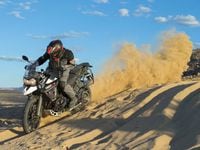
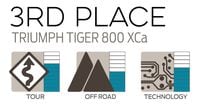
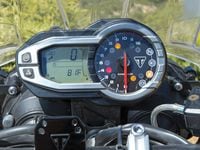
/cloudfront-us-east-1.images.arcpublishing.com/octane/TJPLRGPAI6LA6WVULSFMN7SVAU.jpg)





/cloudfront-us-east-1.images.arcpublishing.com/octane/2YM542JTIHBXFLBQWFBXLJC7JU.jpg)

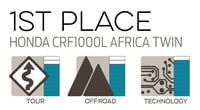
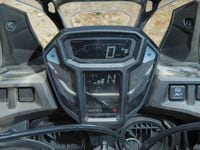
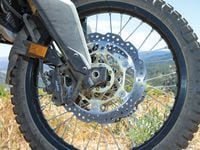
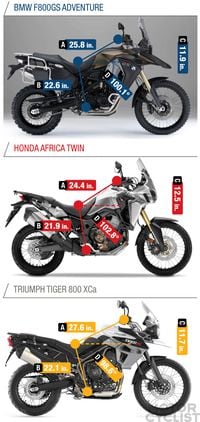

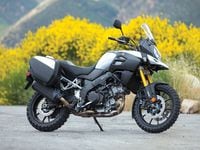
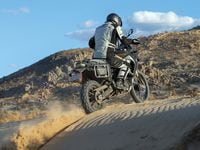
/cloudfront-us-east-1.images.arcpublishing.com/octane/7GJYDUIPXRGMTMQKN6ONYOLBOU.jpg)
/cloudfront-us-east-1.images.arcpublishing.com/octane/MUQLOVLL2ZDGFH25ILABNBXKTI.jpg)
/cloudfront-us-east-1.images.arcpublishing.com/octane/TNOU5DNE2BC57MFPMGN2EIDXAM.jpg)
/cloudfront-us-east-1.images.arcpublishing.com/octane/GTCXACQGJ5HAPDTGWUQKDEH44E.jpg)
/cloudfront-us-east-1.images.arcpublishing.com/octane/S35YGSEMEZB4BLTDJTSZPF4GLA.jpg)
/cloudfront-us-east-1.images.arcpublishing.com/octane/5UOT6HPX2JFMRJAX6EH45AR4MQ.jpg)
/cloudfront-us-east-1.images.arcpublishing.com/octane/OKWOJWAKP5EP3OACCRRWPCIX2Q.jpg)
/cloudfront-us-east-1.images.arcpublishing.com/octane/2WF3SCE3NFBQXLDNJM7KMXA45E.jpg)
/cloudfront-us-east-1.images.arcpublishing.com/octane/G4MG6OUCJNBSHIS2MVVOTPX65E.jpg)
/cloudfront-us-east-1.images.arcpublishing.com/octane/IIGGWFOTOJGB7DB6DGBXCCMTDY.jpg)
/cloudfront-us-east-1.images.arcpublishing.com/octane/QSTCM6AVEZA5JJBUXNIQ3DSOF4.jpg)
/cloudfront-us-east-1.images.arcpublishing.com/octane/U4I7G625B5DMLF2DVIJDFZVV6M.jpg)
/cloudfront-us-east-1.images.arcpublishing.com/octane/B6XD6LS6IVCQPIU6HXDJSM3FHY.jpg)
/cloudfront-us-east-1.images.arcpublishing.com/octane/ICL63FEDDRDTTMINYICCEYGMDA.jpg)
/cloudfront-us-east-1.images.arcpublishing.com/octane/FCGZHQXRBZFLBAPC5SDIQLVF4I.jpg)
/cloudfront-us-east-1.images.arcpublishing.com/octane/WNOB6LDOIFFHJKPSVIWDYUGOPM.jpg)

/cloudfront-us-east-1.images.arcpublishing.com/octane/X33NU3E525ECRHXLNUJN2FTRKI.jpg)
/cloudfront-us-east-1.images.arcpublishing.com/octane/6KKT5NNL2JAVBOXMZYS5ZO76YA.jpg)
/cloudfront-us-east-1.images.arcpublishing.com/octane/J5RKG5O455GMPGQRF2OG6LRT7A.jpg)
/cloudfront-us-east-1.images.arcpublishing.com/octane/GX2CIZKQVRH2TATDM26KFG2DAE.jpg)
/cloudfront-us-east-1.images.arcpublishing.com/octane/ZWIDYSAKQZHD5BHREMQILXJCGM.jpg)
/cloudfront-us-east-1.images.arcpublishing.com/octane/CYUHJZCTSJCH3MRAQEIKXK7SCQ.jpg)
/cloudfront-us-east-1.images.arcpublishing.com/octane/LKOFINY56FCXJCANJ5M7ZDQUBY.jpg)